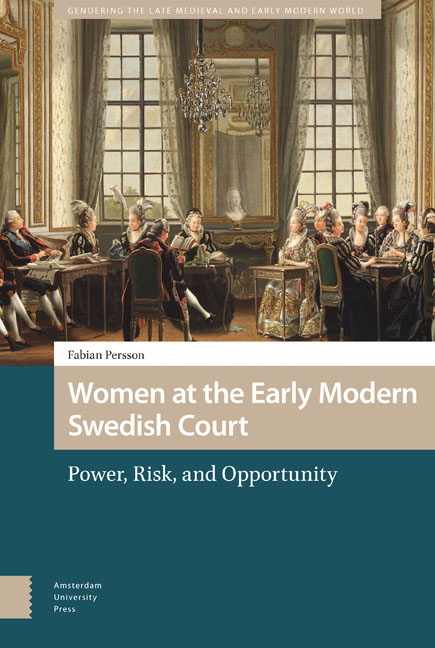Summary
In the unfinished sketch by Carl Gustaf Pilo of the coronation in 1772, Queen Sophia Magdalena is seated on a throne not far from the King. Between the two young royals is a row of Royal Councillors in scarlet robes, but also, closest to the Queen, a group of women. They are a ghostly, translucent presence, barely visible. In both sources and scholarly research women at the early modern court often have a similarly ghostly presence. They are habitually hard to find in the empirical sources, and in scholarship they have rarely taken centre stage, but have at best been given supporting roles, mentioned in passing but with little context. Many sources focus on the formal areas of decision-making such as councils and parliaments. If we rely on these sources alone, women will be largely absent, appearing only intermittently as queens and only very rarely with agency. Even if we turn to the records that detail the everyday aspects of life at court, women remain at least partly invisible. Many are nameless, listed simply as ‘four Maids of Honour’ receiving cloth from the Wardrobe, or like ‘the English Lady’ reduced to their nationality or some other attribute – ‘the dwarf woman’. Yet if we succeed in bringing to life the spectral women in Pilo's painting and all those nameless women in the accounts, we will better understand early modern monarchy and nobility.
For women, living at court was above all a question of power. For some it involved traditional power-broking or playing the sought-after but risky role of favourite. Many could exert some traditional forms of influence – helping a petitioner, putting in a good word for a sibling, extracting a favour. Yet while they routinely helped siblings, nephews, parents, and others, that was only part of the story; women were not just instruments for their families. Some power could be used to help the friends they had made, or even to make their own lives better or richer. And there was the ever-present danger of riding for a fall, as there was competition and jealousy, and added hostility because they were not only powerful, but also women.
For most women, to be at court meant power in all its senses.
- Type
- Chapter
- Information
- Women at the Early Modern Swedish CourtPower, Risk, and Opportunity, pp. 307 - 310Publisher: Amsterdam University PressPrint publication year: 2021



